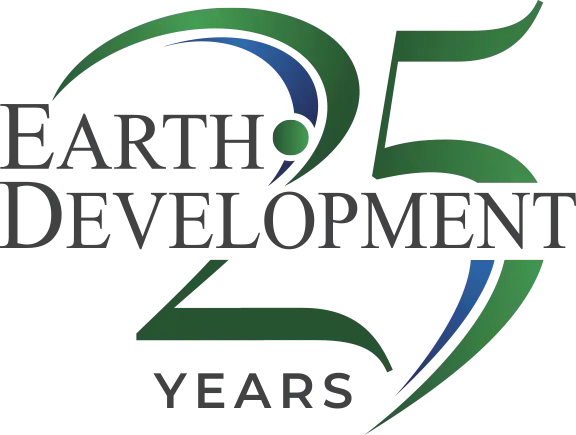Minnesota businesses looking to keep their lawns looking green and lush throughout the summer have the perfect weapon at their disposal, and that’s our teams of local lawn care and landscaping experts throughout Minneapolis.
At Earth Development, we use teams of local professionals with years of experience and great local reputations to provide the most comprehensive landscaping services in St Paul and throughout Minneapolis. We also aim to provide useful lawn care tips right here on our website, and today we’ll explore some summer lawn care tips broken down into steps for early, mid, and late summer.
Minnesota Lawn Care Calendar
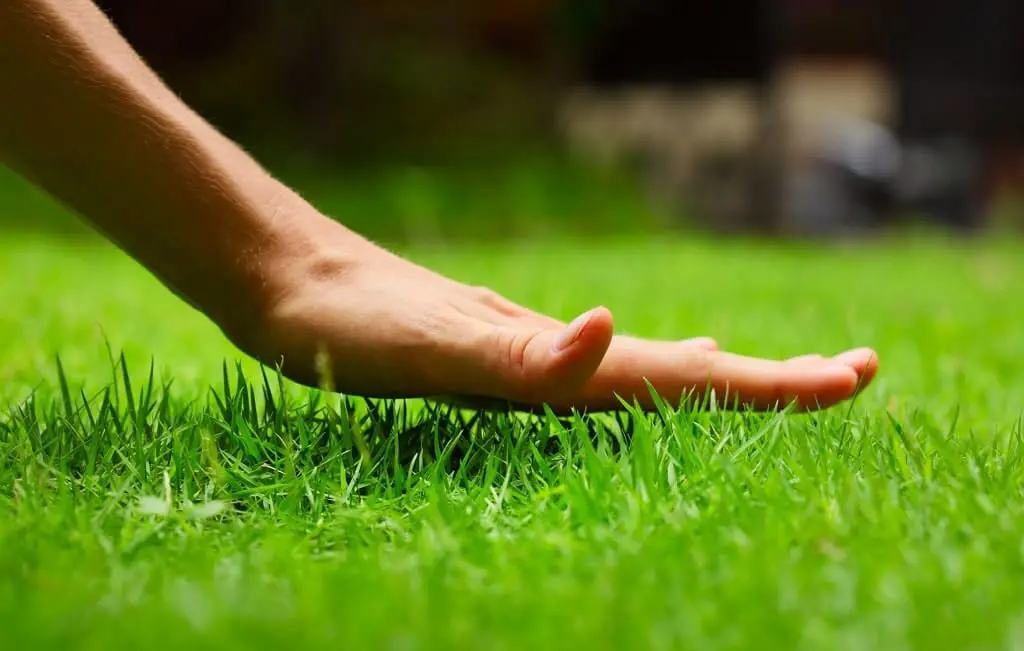
There are tired-and-true lawn care practices for the winter, spring, summer, and fall seasons. Based on the University of Minnesota Extension, the best practices for your lawn are broken down in the table below to help determine your Minnesota lawn care calendar.
Mowing
- Best time to do it: It is best to mow the last week of April through the beginning of November.
Crabgrass Control
- Best time to do it: To tackle crabgrass pre-emergence, it’s best to treat this grass from mid-April to mid-May before it comes up from the ground.
- Okay time to do it: Crabgrass can also be treated post-emergence from mid-May to early July.
Sodding
- Best time to do it: Sodding is best used in early May through June, as well as mid-August to late October.
- Okay time to do it: Sodding can also be used in late June through the second week of August.
Watering
- Best time to do it: Water the grass from May through late October.
Seeding
- Best time to do it: Seed your grasses early August through September and mid-November.
- Okay time to do it: Can seed from May through early June, too.
Fertilizing
- Best time to do it: Use lawn fertilizer or natural fertilizers from early August through mid-October.
- Okay time to do it: Can use fertilizer from May through late June.
Aerating
- Best time to do it: It’s best to aerate from mid-August through mid-October.
- Okay time to do it: Aerating can alternatively be done from late April through May.
Dethatching
- Best time to do it: It’s best to dethatch from mid-August through September.
Broadleaf weed control
- Best time to do it: Broadleaf weed control is most effective from September through the end of October.
- Okay time to do it: This weed control can be effective from May through late June.
Understanding Minnesota Grass Growth Cycle
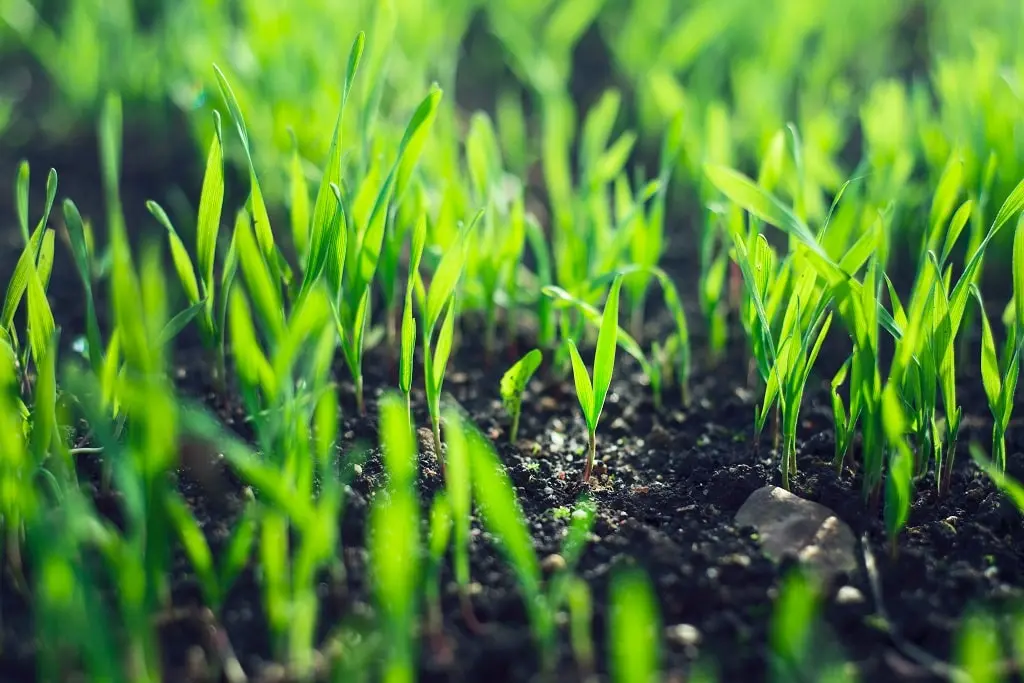
With tumultuous winter seasons, healthy lawns in Minnesota are their most beautiful in the warmer seasons, offering the ideal time for the grass to thrive.
Specifically in Minnesota, due to seasonal changes, cool-season grasses are ideal in the Twin Cities. The best types of cool-season grasses include fine fescue, Kentucky bluegrass, and turf-type tall fescue grass.
There are some reasons it’s best to plant this type of grass in your lawn, but most importantly, these cool-season grasses are best suited for the four seasons and cold winters that Minnesota endures.
With seasonal changes in mind, Minnesota lawns with cool-season grasses can bear the stress of harsh winter. With this in mind, these types of grasses grow most rapidly in the spring and fall when temperatures are cool, and tend to become inactive in the heat and drought of the summer. With the right lawn care routine, you can best support this cycle of this grass.
For cool-season grass, early spring brings long roots rich with nutrients. With this build-up of nutrients, the shoots can store energy for growth.
In the summer, the leaf and root growth slows down, allowing plants to rest during the heat. Then, when fall comes around, the shoots grow once again, storing nutrients in anticipation of the winter.
Spring Lawn Care Minnesota
To better understand your Minnesota lawn care schedule, there are some specific checklists for your lawn during the Spring months that will be a benefit to your grass. Let’s break it down.
Early Spring Lawn Checklist (March – Early April)
For Spring lawn care, Minnesota only has a few tasks to do. March and early April are typically months when your yard is still dormant. For this reason, it’s all about preparation, with tasks including:
- Sharpening your mower blades.
- Clean or replace your air filter.
- Change your spark plug.
- Grease any fitting on your mower.
- Replace old fuel.
Late Spring Lawn Checklist (mid-April – May)
Late April through May is when the Minnesota lawn care begins. The checklist includes:
- When the lawn and soil are relatively dry, begin to rake and dispose of dead grass and snow mold.
- Apply an early layer of fertilizer to more high-maintenance lawns, like Kentucky Bluegrass.
- Apply fertilizer at half the recommended amount for more low-maintenance lawns.
- Apply crabgrass pre-emergent before it begins to grow.
- Mow as needed to keep a lawn depth of 2″ or more.
Summer Lawn Care in Minnesota
Early Summer Lawn Care Tips
Your lawn care should be determined based on the kind of grass you have and the exact time of year. Let’s first explore late spring/early summer lawn care.
If you have warm-season grass, expect it to grow best in temperatures in the 70s (F). Any higher than that and your lawn will need additional care and potentially more shade to help avoid major damage.
In the early summer, May and June, be sure to apply fertilizer as early into the season as you can. This helps your lawn defend itself against high temperatures and makes it more drought resistant. Use too much, however, and you risk burning your lawn.
Spread your fertilizer evenly and cautiously, and use a specific summer grass fertilizer formula. Or, hire Earth Development for expert lawn fertilizer services.
People often ask “can you fertilize in the summer with cool-season grass?” and the answer is no. If you have cool-season grass, don’t fertilize the grass at all in the summer. Save that for the cool seasons.
Mow Your Lawn High
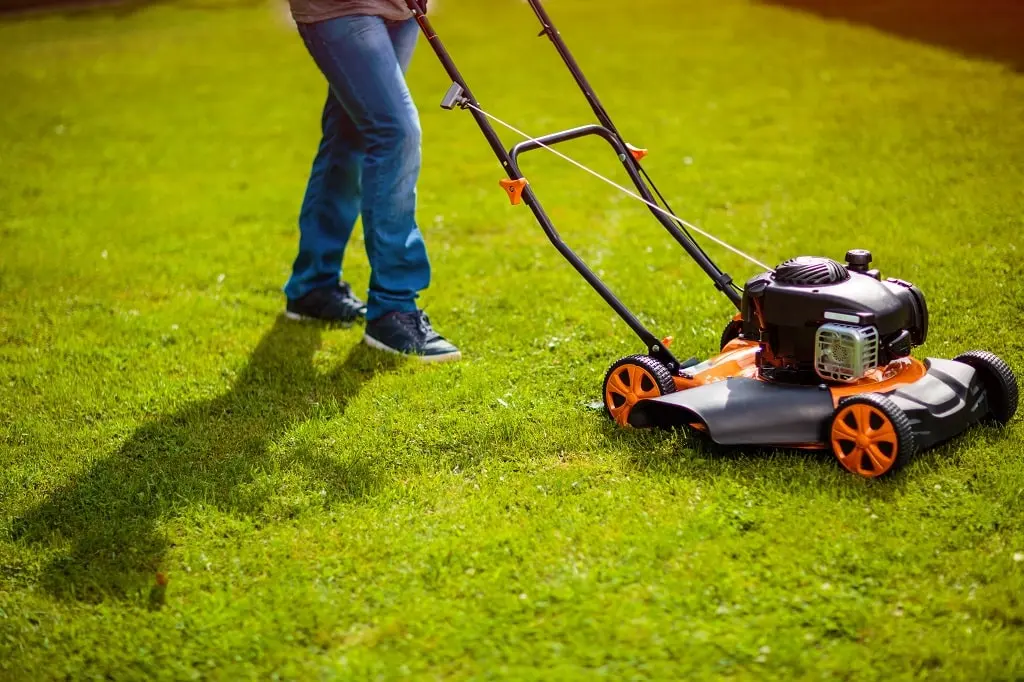
Remember to mow your lawn high in the early summer, too. The idea here is to encourage stronger root growth in your grass and to allow it to tolerate the heat more easily. When your grass is taller, it creates more shade on the soil. It protects the grass from the sun but also prevents weeds from germinating quite as easily.
Take a look at a lawn mowed too short in the summer, and you’ll probably notice that it looks unhealthy and weeds poke through the blades of grass more often.
For warm-season grasses, keep it between two and three inches tall. For cool-season grasses, try and keep it between three and four inches. Never cut more than one-third of your grass blade every time you mow.
Integrate Pest Control
Summer is the time when pests come out, and they can wreak havoc with your lawn. Whether they’re June bugs, beetles, grubs, or even European chafers, you can expect these pests to eat your grass and weaken its resilience to drought and high heat.
Use high-quality pesticides designed to kill bugs and pests without hurting your grass and apply them in the late spring or early summer.
Control Weeds
Early summer is also the perfect time for weed control. At this time of the year, you can more effectively kill weeds before they have a chance to grow, bloom, and then spread their seeds. It protects you this summer and even next summer because you are preventing the problem before it begins.
Many herbicides are designed to target weeds and not grass…but it’s not a perfect science. Use too much and you can still cause harm to your lawn, which is why we advise Minnesota businesses to entrust this process with our teams of local experts.
Mid-Summer Lawn Care Tips
Once you enter mid-summer, your lawn care should change slightly. There are two important tips to remember when it comes to mid-summer lawn care.
Water Your Lawn Properly
Once you reach mid-summer, the temperatures start to rise rapidly. This is when you must water your lawn properly. Overwatering can be just as bad as underwatering, and when the temperatures are high your grass can quickly wilt and die.
Be sure to water your lawn once or twice every week, and make sure that the water penetrates four to six inches. A good way to know that the water is penetrating the soil deeply enough is to insert a screwdriver or similar tool into the soil and see how resistant you feel. If it goes in too easily, it means you are overwatering. If you feel too much resistance, you need to water more. Make sure that you can push the screwdriver into the ground with some resistance, but not too much.
Fertilize Your Grass

Lawns sometimes need mid-summer feeding, but this shouldn’t happen too frequently. Warm-season grasses are more likely to need this extra boost, but remember what we said about too much fertilizer burning your grass. Ask your local garden center or garden supplies company for the best mid-summer fertilizer and apply sparingly if necessary.
Late Summer Lawn Care Tips
Once you enter late summer, your lawn maintenance should be undertaken with next summer in mind. Here are some of our top late summer lawn care tips.
Aerate Your Lawn
Around August and September time, you should consider aerating your lawn. It’s not necessary, but it can be helpful. This is a process that involves pulling up “cores” from the soil or poking many long holes into the ground to break up any soil that has become compacted. It also makes it easier for air, water, and nutrients to penetrate more deeply into the soil.
This commonly overlooked late summer lawn care tip can be done with special aerating tools that make the job quicker and easier, or with garden forks and spikes.
Overseed Your Lawn If Needed
Overseeding in summer can have an amazing impact on your lawns’ growth next year, too. This helps fill out a lawn that has become patchy through the summer months – and you may even see some growth before the season ends. By applying additional seed across your lawn, you’ll have a healthier, more resilient, and greener turf.
Dethatch Your Grass
Finally, don’t forget to dethatch your grass! This is a process whereby dead leaves and other organic matter are raked from the grass, leaving behind fresh soil and your lawn. It removes an organic barrier between the soil and the air, making it easier to apply nutrients and water.
Knowing when to dethatch a lawn is important. When we say to dethatch in the late summer (August and September) we’re talking about cool-season grasses. For warm-season grasses, dethatch the lawn during early summer – and never dethatch your lawn when it is stressed or dormant. That means no dethatching in the mid-summer or the middle of winter!
Fall Lawn Care in Minnesota
For fall lawn maintenance, Minnesota has a few items on the checklist to ensure a healthy lawn. In this region with cool-season grasses, the fall season is when the grass thrives most, outside of Spring, calling for a full lawn care Minnesota routine. Let’s break it down.
Dethatching and Aerating
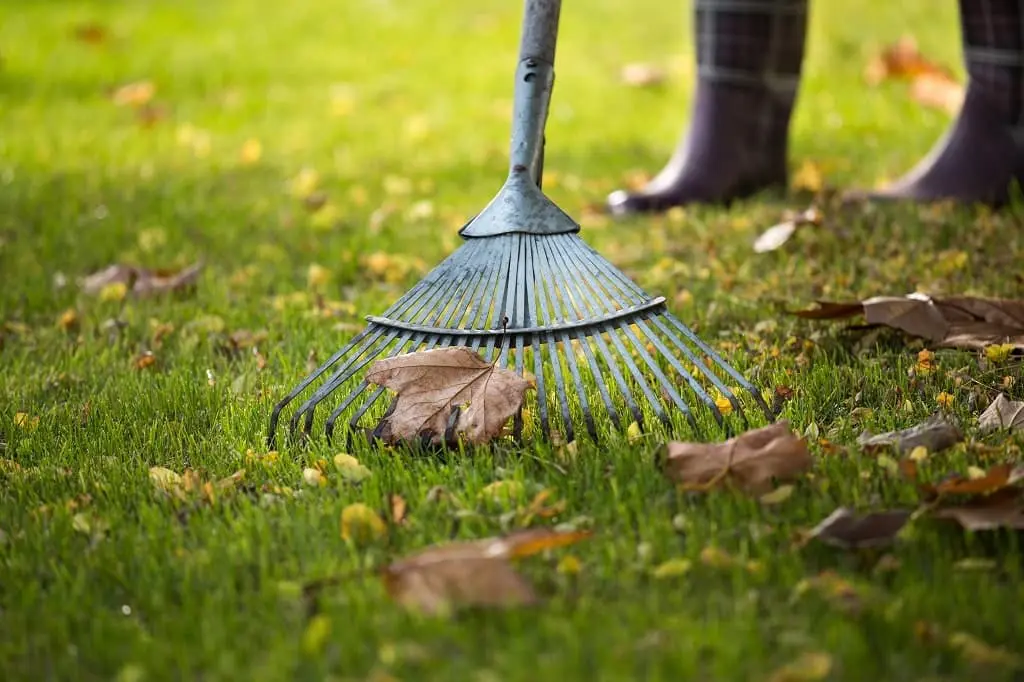
Dethatching and aerating are essential steps in the fall.
Before undergoing this process, give an inch of water to your lawn and let it soak in around 2 to 3 days in advance. When aerating, you want to take out at least a 3 to 4-inch plug, and if the soil is too dry this won’t be possible.
Typically, the best time to schedule these lawn treatments is in mid-August and the end of September.
Seeding
Fall is also a time for seeding. If you plan to oversee this fall, it’s best to do this in the last two weeks of August through the first 10 days of September. This can go on for a bit later, but not after September ends. It’s important to give the roots a chance to mature before winter to survive the harsh temperatures.
Fertilizing
If you’re wondering when to fertilize the lawn in MN, now is the time. Typically, the best time to fertilize the lawn is from mid-August through mid-September. This timing is essential to allowing your lawn to grow and recover after the summer season.
In addition, when it comes to when fertilizing lawns, Minnesota yards can also benefit from a late fall application in mid-October through mid-November.
When it comes to lawn fertilization, Minnesota residents will get many benefits, including:
- Preparing the lawn for winter.
- Improving shoot density.
- Promoting deep roots.
- Prolonging the dark green color into the early winter.
- Providing storage of carbohydrates.
- Keeping your lawn looking healthier and longer.
Leave Your Lawn Maintenance to the Experts
Need help maintaining your lawn this year? With our teams of local landscaping experts throughout Minnesota, focus on running your business. We’ll handle all your landscaping needs, from lawn aeration and fertilization to regular mowing and watering.
Want a free quote, or to learn more about our commercial lawn maintenance services? Give the team a call today!
